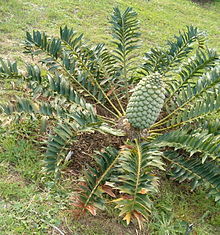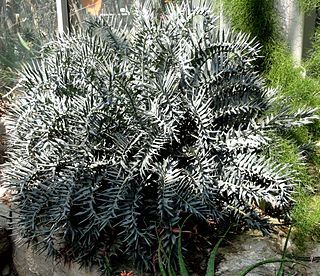
Encephalartos horridus, the Eastern Cape blue cycad, is a small, low-growing cycad up to 0.9 m (3.0 ft) high and 0.9 m (3.0 ft) wide. It is a native of Eastern Cape Province, South Africa, and found in arid shrublands, most commonly on ridges and slopes with shallow soils. The species is particularly known for its distinctly blue-gray leaves, although the degree of coloration can vary significantly. The species name horridus is Latin for 'bristly', after the plant's stiff, spiny leaflets.

Encephalartos ferox, a member of the family Zamiaceae, is a small cycad with 35 cm wide subterranean trunk. It gets its name from the Latin word ferocious, likely from the spine-tipped lobes on the leaves of the plant. It is found naturally on the south-eastern coast of Africa where it has been used by local people for its starch content. It is considered to be one of the most popular cultivated cycads.

Encephalartos whitelockii is a species of cycad that is native to Uganda.

Encephalartos trispinosus is a species of cycad that is native to the Eastern Cape Province of South Africa.

Encephalartos princeps is a species of cycad that is native to Eastern Cape Province of South Africa.

Encephalartos paucidentatus is a species of cycad.

Encephalartos gratus is a species of cycad that is native to Malawi and Mozambique.

Encephalartos friderici-guilielmi is a species of cycad that is native to Eastern Cape province and KwaZulu-Natal province of South Africa at elevations of 700 up to 1400 meters.

Encephalartos eugene-maraisii is a species of cycad in the family Zamiaceae. It is endemic to South Africa, where it is limited to Limpopo. It is known as the Waterberg cycad.

Encephalartos cycadifolius is a species of cycad that is native to the Winterberg mountains to the north of Bedford in the Eastern Cape province, South Africa. It is found at elevations from 1,200 to 1,800 meters.
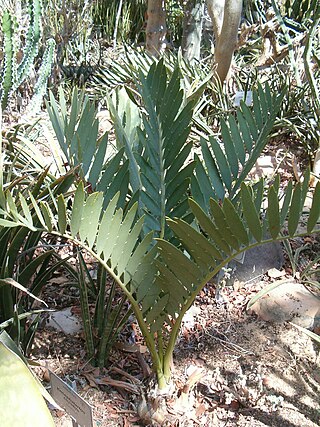
Encephalartos cupidus is a species of cycad that is found in the Limpopo Province, South Africa at elevations of 700 up to 1,500.
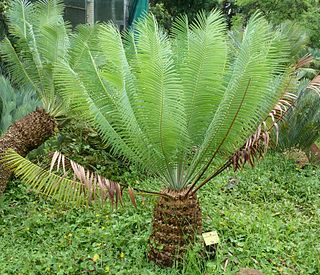
Encephalartos inopinus is a species of cycad that is native to Limpopo Province, South Africa.

Encephalartos hildebrandtii is a species of cycad in the Zamiaceae family. It is native to Kenya and Tanzania at elevations from sea level to 600 metres (2,000 ft). The species is named for the German explorer Johann Maria Hildebrandt.
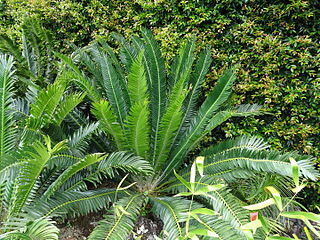
The Chimanimani cycad is a species of cycad that is endemic to the Chimanimani Mountains of eastern Zimbabwe. It is a threatened species which has been locally extirpated by cycad collectors.
Encephalartos macrostrobilus is a species of cycad in Africa. It is found only in Moyo District, northwestern Uganda, which is populated predominantly by the ethnic Madi.
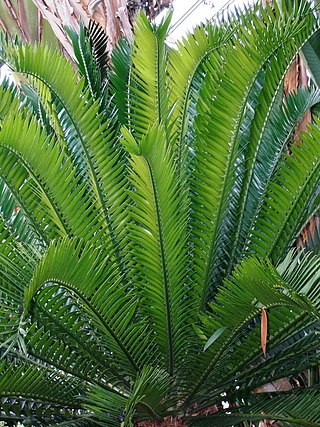
Encephalartos bubalinus is a species of cycad in Kenya and Tanzania.

Encephalartos cerinus or Waxen Cycad is a species of cycad in Africa.
Encephalartos dyerianus, known colloquially as the Lillie cycad, is a species of cycad that is native to hillsides in the lowveld of eastern Limpopo, South Africa.
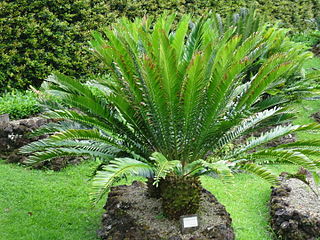
Encephalartos msinganus is a species of cycad from Kwazulu-Natal.

Encephalartos ngoyanus is a species of cycad in Ngoye Forest, in KwaZulu-Natal, South Africa.
